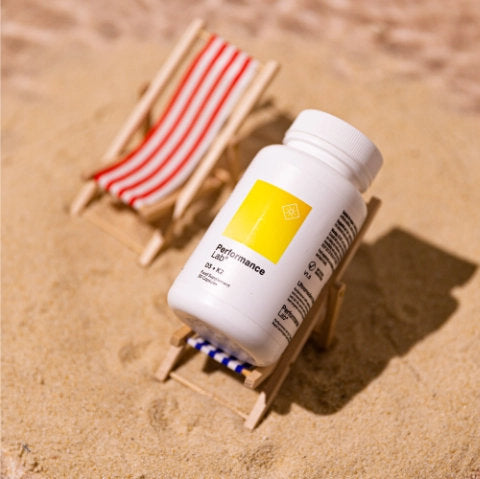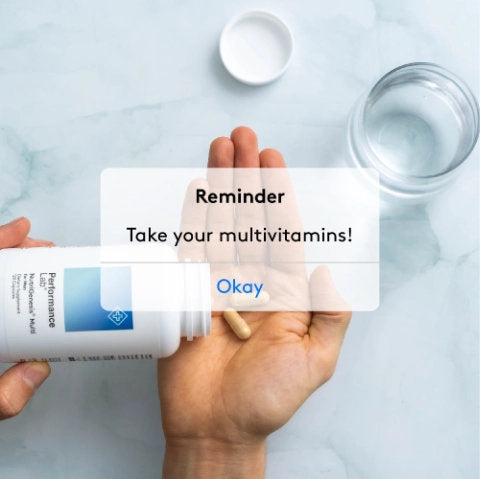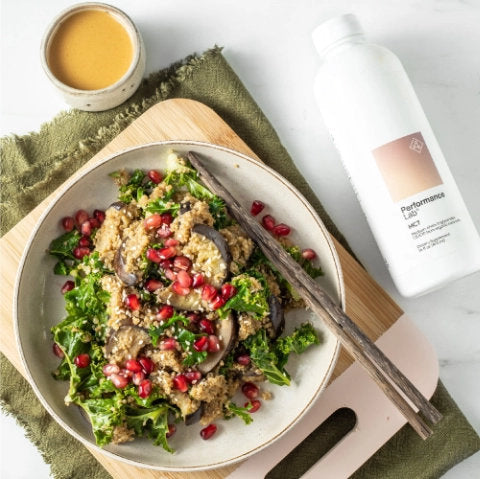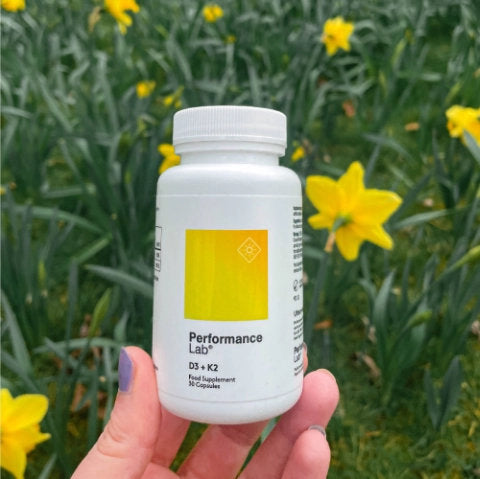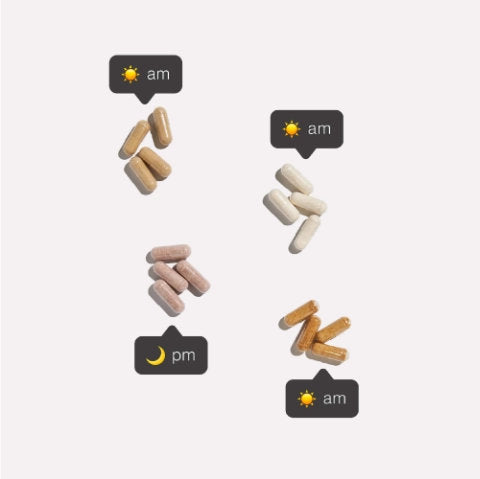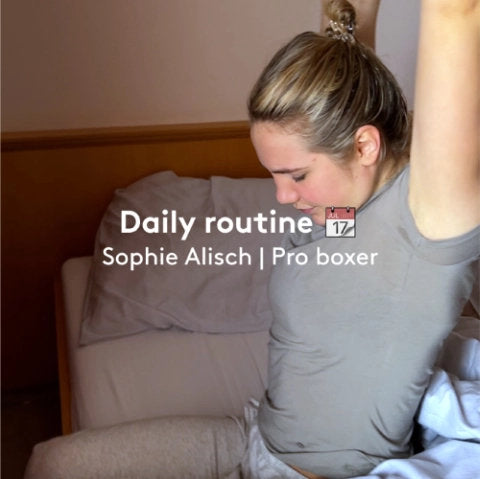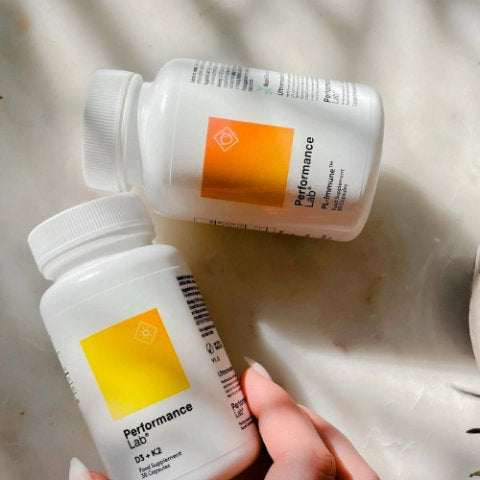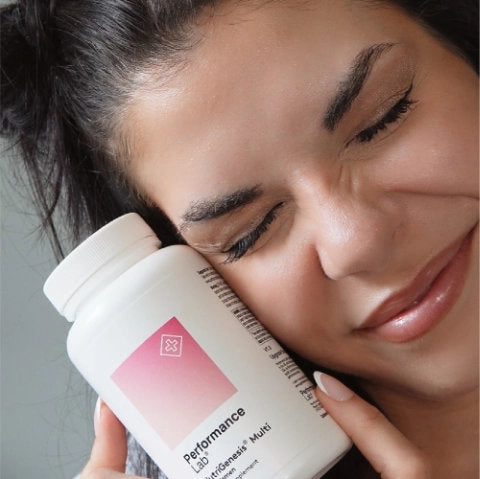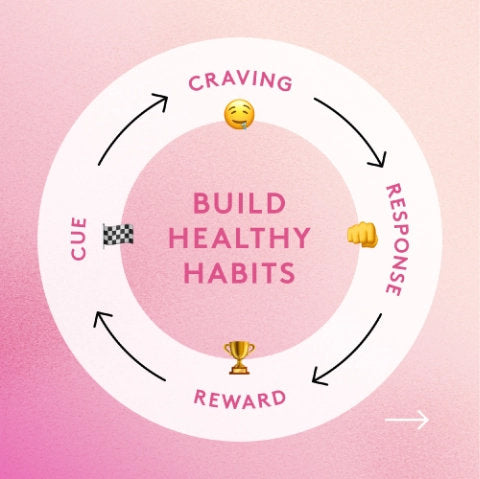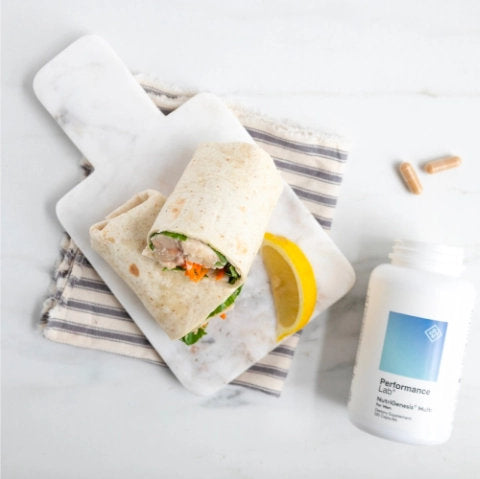Have you ever heard that the iron required by the body is the same iron found in a cast-iron skillet?
Whether you have or not, it’s true! Iron is one of the most misunderstood nutrients, especially when it comes to plant-based diets or people trying to transition to a vegetarian or vegan diet.
Iron is found all over the earth and is the most abundant metal in the human body. It’s primarily known for being a component of red blood cells and supporting oxygen transport, but that’s not its only role.
But despite how prevalent iron is, it’s one of the most common deficiencies in North America. If you’re tired, weak, and shaky, it could be your body’s way of telling you you’re low in iron.
And when it comes to iron levels, women, vegans and vegetarians must pay special attention to ensure they’re getting enough.
Along with several other hard-to-get nutrients on a vegan diet, Performance Lab NutriGenesis Multi can help keep your iron levels up.
This article outlines the importance of iron for vegans and vegetarians, what you can expect if you’re deficient, and how to increase iron intake on a vegan or vegetarian diet with the best vegan iron supplement.
What Is Iron?
Iron is an essential mineral and the most abundant metal in the human body, and adults require about 3-4 grams daily to prevent low iron stores.
Dietary iron is found in two forms: heme and non-heme 1. Heme iron is found in animal sources and has good bioavailability, whereas non-heme iron accounts for most of the iron in plants and has significantly lower bioavailability.
Iron is found in the highest concentrations in meat in the form of hemoglobin and myoglobin, where it’s released from proteins after being acted on by proteolytic enzymes in the stomach and small intestine 1.
After being metabolized and released from proteins, absorbed iron is sent to bone marrow for hemoglobin synthesis, and a small percentage is stored in the liver. All iron is transported throughout the body by a small protein called transferrin.
There’s one minor caveat with iron: too much iron can be a problem, and so can too little.
Vegans and vegetarians have an iron RDI 1.8 times higher than meat-eaters simply because iron from plants is far less absorbable than iron from animal sources 2.
As a result, plant-based diets have greater iron requirements. Studies confirm that a higher proportion of vegetarians have iron deficiency anemia than non-vegetarians, especially premenopausal women on a plant-based diet 2.
Plant-based iron is less bioavailable due to absorption inhibitors in plant foods, including phytates, oxalates, and polyphenols, which are common in foods like grains, nuts, and legumes.
This is important to keep tabs on because vegetarians and vegans rely on grains as a source of iron, and it’s estimated that over 50% of phytate intake comes from grains. Because of this, intake requirements increase to compensate for the lack of absorption.
The recommended iron intake for the general population is 7–18 mg per day and up to 27 mg for pregnant women 3.
Iron Deficiency Signs And Symptoms
For many people, an iron deficiency isn’t apparent until it becomes severe. Still, low iron levels can be serious, resulting in impaired physical performance, developmental delays, cognitive impairment, and adverse outcomes for pregnancy 3.
But the bulk of these consequences come only when iron deficiency is severe enough to cause a measurable drop in hemoglobin concentration. Once iron deficiency reaches anemia status, functional disabilities become more evident.
Because anemia primarily affects maximal oxygen consumption, physical performance (endurance) takes a major hit, leading to symptoms like chronic fatigue and muscle weakness.
Other common symptoms of iron deficiency are:
- Poor cognitive function
- Fatigue
- Weakened immune function
- Pregnancy complications
- Low energy
- Shortness of breath
- Difficulty concentrating
- Difficulty regulating body temperature
- Heart palpitations
- Headaches
- Tongue tenderness
- Hair loss
- Pica
- Restless leg syndrome
Although low iron levels take time to develop, vegetarian and vegan diets contain high amounts of non-heme iron, which is subject to absorption inhibitors, leading to inadequate dietary iron intake.
If you’re getting tested for iron status and have low ferritin levels, you’re iron deficient.
Should You Take Iron Supplements?
So, with all of that said—should you take an iron supplement?
The answer isn’t a straightforward yes or no—it depends on how deficient you are.
Taking an iron supplement probably isn't required if you get iron in forms with adequate absorption. However, adding a bit of supplemental iron could benefit vegans and vegetarians as they likely aren’t absorbing enough through their diet.
You’ll want to get your levels tested before you supplement to avoid overdoing it. But there are benefits to increasing levels:
Boosts immune function
Iron may not be the first nutrient you associate with immune function—it’s probably vitamin D or zinc—but iron is a fundamental part of developing and maintaining the immune system 4.
Iron deficiency has been shown to interfere with the capacity to mount an appropriate immune response, as it’s needed for immune cell proliferation and maturation, especially lymphocytes, associated with stimulating a specific response to infection.
Increases energy levels
Fatigue and weakness are some of the tell-tale signs of iron deficiency, as it means your body isn’t getting enough oxygen for normal organ function.
Hemoglobin is the functional unit of red blood cells, and iron is required to contribute the heme to hemoglobin. When oxygen transport is impaired, tissues cannot perform.
And when iron intake is insufficient due to poor dietary intake or malabsorption, it can affect the body’s ability to use energy, impacting mental and physical performance efficiently.
As a result, you start to see things like poor focus and attention, irritability, low stamina, and the like.
Regulates body temperature
Always cold? It could signify that your iron levels aren’t up to par.
Poor temperature regulation is linked to iron deficiency anemia due to iron’s role as a cofactor in mechanisms related to metabolism and thermoregulation5.
Studies find that iron-deficient individuals have difficulty regulating core body temperature due to interference with both rates of heat production and heat loss 6.
Impaired heat production is due to impaired thyroid function, while the latter is competing for demands for tissue oxygenation versus reduced blood flow to minimize heat losses.
Iron is required for hemoglobin production, which transports oxygen around your body and oxygenates tissues to allow them to conserve and generate heat.
But when iron and hemoglobin levels are low, tissues are poorly oxygenated, which has the opposite effect—it reduces heat production, increases heat losses, and impairs thyroid hormone production and function.
As a result, you become more sensitive to cold stress. Long story short, higher iron levels and red blood cells mean better temperature regulation 7.
Six Ways To Get More Iron In Your Diet
Load up on grains and legumes
If you’re a vegan or vegetarian who consumes an abundance of grains to hit your iron levels, you’re doing well.
However, because grains and legumes are a major source of nutrient absorption inhibitors, proper preparation and cooking are crucial to access that iron.
Cereals with bran are a great source of iron, with some having over 15mg in just a 3.5-ounce serving. Soybeans, lentils, and chickpeas are another great option, containing roughly 5mg in a 3.5-ounce cooked portion.
If you want to absorb the iron in these foods, try soaking before cooking, fermenting, or germinating (sprouting) the foods, which helps reduce phytic acid content 2
Consume iron with vitamin C
If you’re consuming non-heme iron from plant-based foods, pairing it with vitamin-C-rich food is one of the most effective ways to boost absorption.
Vitamin C is a potent enhancer of non-heme iron and can reverse the effects of mineral absorption inhibitors like calcium and phytates 8. But how much absorption is enhanced is directly proportional to how much ascorbic acid is present.
Essentially, vitamin C (ascorbic acid) captures non-heme iron and stores it in a more readily absorbable form in the small intestine 9.
Studies find that just 100mg of vitamin C added to an iron-rich meal can increase absorption by a whopping 67% 10.
So, if you need to boost your levels, try adding vitamin C-rich foods like strawberries, blueberries, currants, citrus, bell peppers, and dark leafy greens (kale, collard greens, mustard greens, etc.) to foods high in plant-based iron.
Consume less to absorb more
It may sound counterintuitive, but supplement less often to absorb more and maintain adequate iron stores.
Studies show that supplementing iron on consecutive days or the same day decreases absorption, and absorption from supplements is highest if iron is supplemented on alternate days rather than back-to-back 11.
Doses of 60mg in non-anemic women with iron deficiency were effective in increasing levels, but higher doses of 100 to 200 mg on alternate days can increase iron absorption and lower the incidence of gastrointestinal symptoms as side effects.
Avoid coffee and tea with iron-rich foods
Having a coffee with a meal rich in iron may sound like a great idea, but tea and coffee are both big sources of tannins, which inhibit iron absorption 2.
If you want to consume one of these beverages, wait 1-2 hours after a meal. Calcium also acts similarly, so avoid foods high in calcium with meals high in iron.
Cook with cast-iron
Cast iron pans are fantastic to cook with, but some research leads people to believe that cooking with cast iron can increase hemoglobin concentrations in people who are anemic or iron-deficient 12, 13.
Most foods cooked on cast iron will release a few milligrams of iron per cup, but adding more acidic foods tends to increase the release to around 10mg per cup.
However, if you’re deficient in iron, don’t rely on cast iron cookware to raise your levels.
Try a vegan iron supplement
While taking a pure iron supplement isn’t recommended for people who aren’t diagnosed with iron deficiency, you can include iron in your multivitamin—but how much iron do you need?
Realistically, don’t go willy-nilly. With a recommended daily intake of just 09.3–20.5 mg/day in men and 17.0–18.9 mg/day in women, you want to stick within the recommended ranges if you’re not consuming a diet high in heme iron.
NutriGenesis Multi for Men supplies 2mg of iron, and NutriGenesis Multi for Women provides 8mg per serving to maintain stores when taken alongside a balanced diet.

Unlike conventional multivitamins that don't supply the most absorbable form and underdose, NutriGenesis Multi supplies nature-identical nutrients complexed with cofactors to enhance iron absorption and maximize benefits.
It’s the smartest and most innovative multivitamin with gender-specific doses for hormonal balance and whole-body biological performance.
References
- Hooda J, Shah A, Zhang L. Heme, an essential nutrient from dietary proteins, critically impacts diverse physiological and pathological processes. Nutrients. 2014;6(3):1080-1102.
- Pawlak R, Berger J, Hines I. Iron Status of Vegetarian Adults: A Review of Literature. Am J Lifestyle Med. 2016;12(6):486-498.
- Institute of Medicine (US) Panel on Micronutrients. Dietary Reference Intakes for Vitamin A, Vitamin K, Arsenic, Boron, Chromium, Copper, Iodine, Iron, Manganese, Molybdenum, Nickel, Silicon, Vanadium, and Zinc. Washington (DC): National Academies Press (US); 2001. 9, Iron. Available from: https://www.ncbi.nlm.nih.gov/books/NBK222309/
- Soyano A, Gómez M. Participación del hierro en la inmunidad y su relación con las infecciones . Arch Latinoam Nutr. 1999;49(3 Suppl 2):40S-46S.
- Rosenzweig PH, Volpe SL. Iron, thermoregulation, and metabolic rate. Crit Rev Food Sci Nutr. 1999;39(2):131-148.
- Brigham D, Beard J. Iron and thermoregulation: a review. Crit Rev Food Sci Nutr. 1996;36(8):747-763.
- Carlson, S. J., & Marriott, B. M. (Eds.). (1996). Nutritional needs in cold and high-altitude environments: applications for military personnel in field operations.
- Lynch SR, Cook JD. Interaction of vitamin C and iron. Ann N Y Acad Sci. 1980;355:32-44.
- Hurrell R, Egli I. Iron bioavailability and dietary reference values. Am J Clin Nutr. 2010;91(5):1461S-1467S.
- Hallberg L, Hulthén L. Prediction of dietary iron absorption: an algorithm for calculating absorption and bioavailability of dietary iron . Am J Clin Nutr. 2000;71(5):1147-1160.
- Stoffel NU, Zeder C, Brittenham GM, Moretti D, Zimmermann MB. Iron absorption from supplements is greater with alternate day than with consecutive day dosing in iron-deficient anemic women. Haematologica. 2020;105(5):1232-1239.
- Geerligs PD, Brabin BJ, Omari AA. Food prepared in iron cooking pots as an intervention for reducing iron deficiency anaemia in developing countries: a systematic review. J Hum Nutr Diet. 2003;16(4):275-281.
- Alves C, Saleh A, Alaofè H. Iron-containing cookware for the reduction of iron deficiency anemia among children and females of reproductive age in low- and middle-income countries: A systematic review. PLoS One. 2019;14(9):e0221094.





